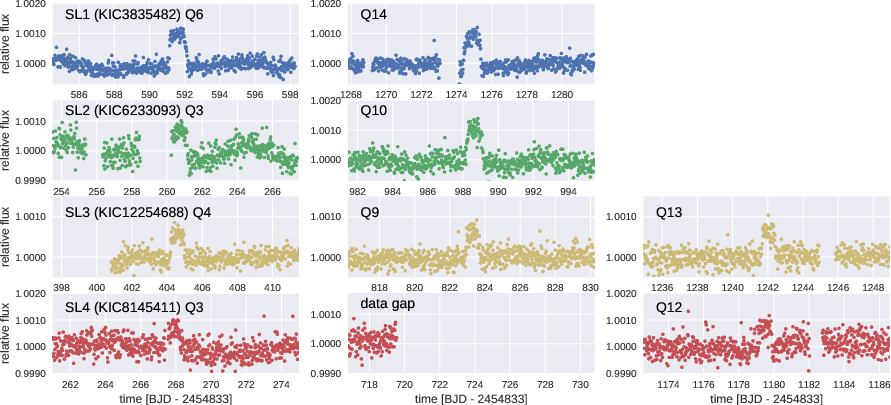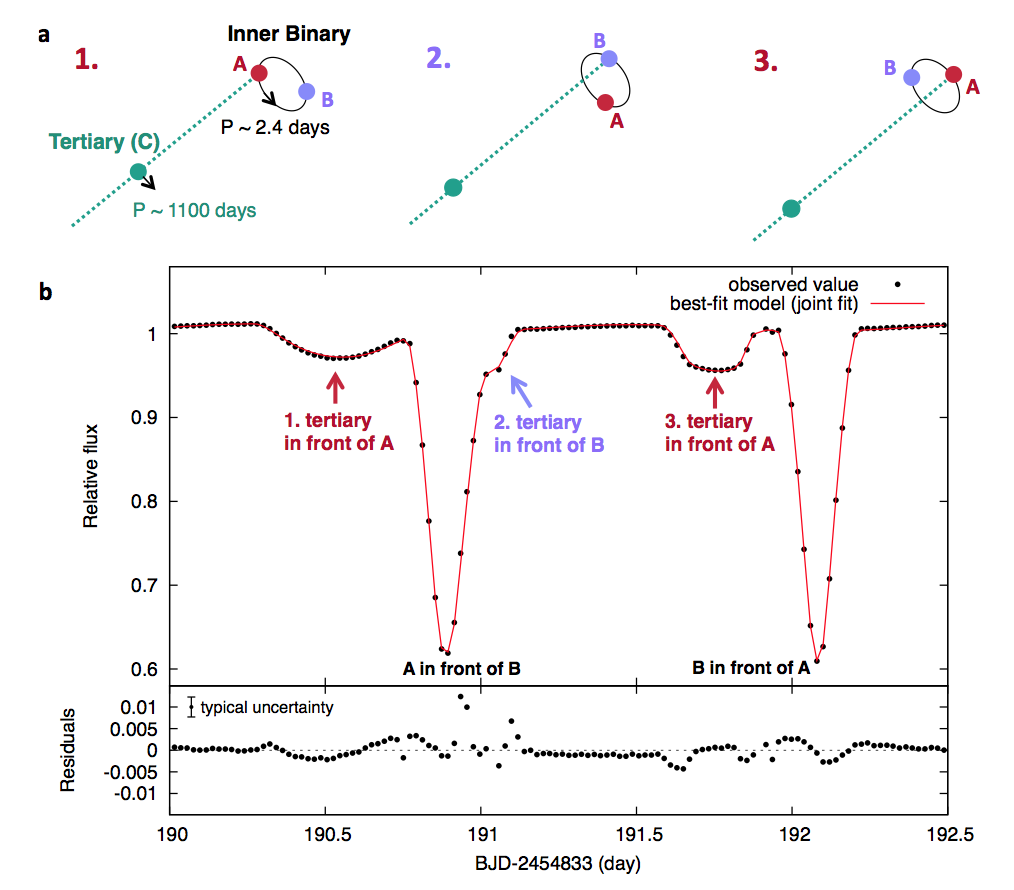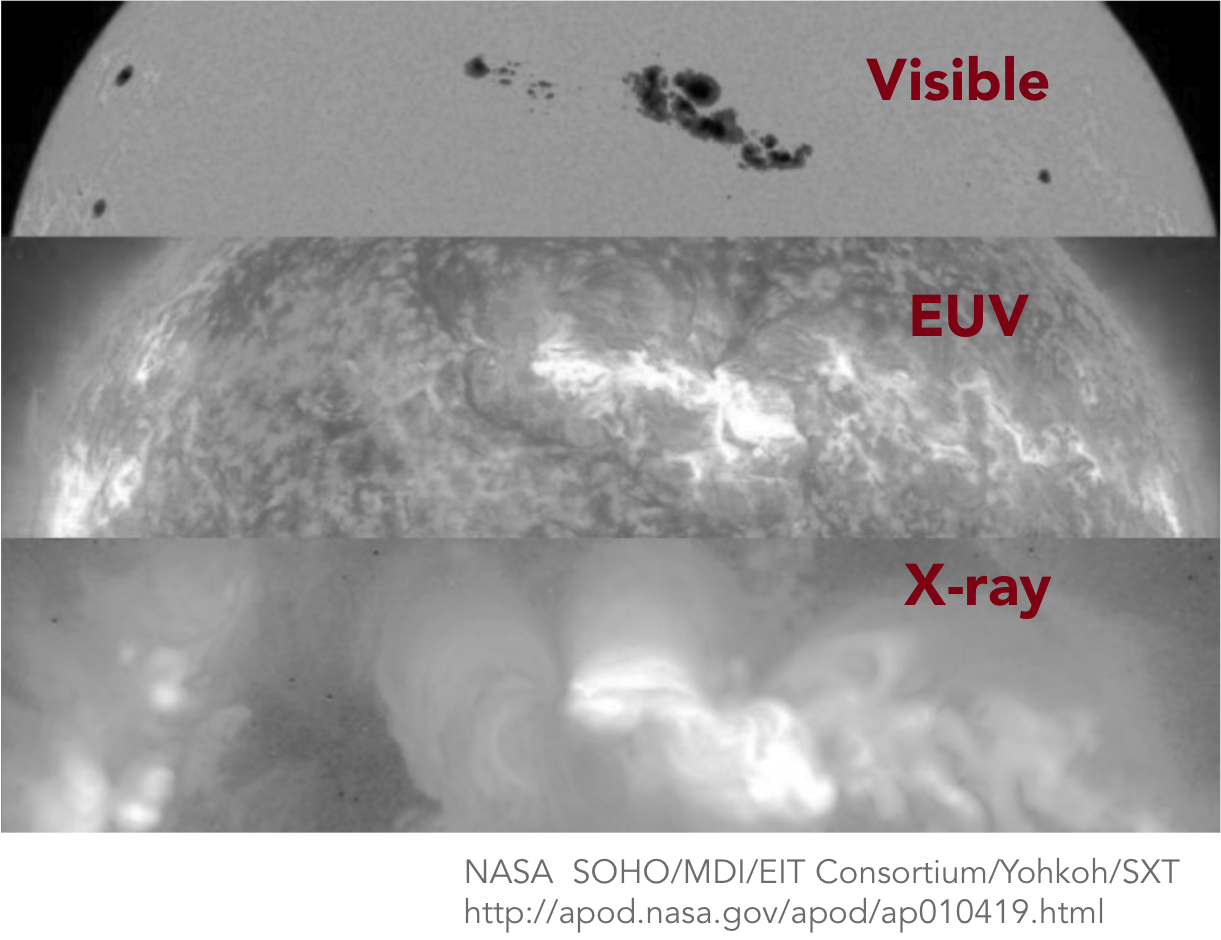Analyzing Kepler Light Curve
Self-lensing Binaries from Kepler
Self-lensing binary (SLB) is edge-on binaries with compact objects that gravitationally magnify (instead of eclipsing) the light of their stellar primaries. We discovered three SLB (white dwarf - star binaries) and one candidate by a systematic search for pulses with long periods in the Kepler photometry. The self-lensing light curves and radial-velocity orbits by TRES enable us to directly measure the white dwarf mass. The white-dwarf mass and orbital periods implies that SLB1–3 are likely field binaries with very similar characteristics to the field blue straggler binaries.

Inverted transit by self-lensing binaries. SLB1–3 and a candidate (SLC4).
- “Discovery of Three Self-lensing Binaries from Kepler”, Hajime Kawahara, Kento Masuda, Morgan MacLeod, David W. Latham, Allyson Bieryla, Othman Benomar
Accepted for publication in the Astronomical Journal arXiv:1801.07874,
Long-Period Planet Search
Kepler spacecraft was a great success with the discovery of several thousand planets. Most Kepler planets have < 1 yr orbit because the mission lifetime (4yr) and the fact that the standard procedure normaly requires at least 3 transits. We focus on longer-period planets with single transiting events (STE). By visual inspection of ~8,000 KOI stars, we discovered 7 systems with the STE which are consistent with Neptune- to Jupiter-sized objects of orbital periods ranging from a few to ∼ 20yr. Then, we estimate that >~ 20 percent of the compact multi-transiting systems host cool giant planets with periods > ~ 3yr based on their occurrence in the KOIs with multiple candidates. The leading author, Sho Uehara (Tokyo Metropolitan University->private company), got a Master’s degree with this research fro Tokyo Metropolitan University.

Architecture of the STE systems we found
Elisabeth Matthews wrote a wonderful review (with correct English) of this paper in astrobites: http://astrobites.org/2016/02/29/icy-giants-kepler-exoplanets-on-long-period-orbits/
“Transiting Planet Candidates Beyond the Snow Line Detected by Visual Inspection of 7557 Kepler Objects of Interest”, Sho Uehara, Hajime Kawahara, Kento Masuda, Shin’ya Yamada, Masataka Aizawa, ApJ accepted, arXiv:1602.07848,
Superflat Tertiary KIC 6543674
We really like the single transiting event! This system is a close binary with P=2.4 d, but there is a single transiting event by a tertiary in the 4 yr Kepler data. The detailed modeling and analysis by Kento Masuda revealed the structure of this system. Very flat hierarchical system! I like it.

STE in KIC 6543674
“Absolute Dimensions of a Flat Hierarchical Triple System KIC 6543674 from the Kepler Photometry”,Kento Masuda, Sho Uehara, Hajime Kawahara, ApJL, 806, L37 (2015), arXiv:1506.01891,
KIC 12557548 b : Star-Planet Interaction ? of an evaporating planet candidate
KIC 12557548b (KOI 3794 b) has been considered as a disintegrating small planet (Rappaport+12; R12). This object has three distinct features: 1) violent variation of the transit depth, 2) an asymmetric tail of the transit curve and 3) a small bump. The latter two features in the light curve can be interpreted as a shadow of a dusty tail from the evaporating planet and the forward scattering by the dust. Analyzing the intensity of forward scattering, Brogi +12 and Budaj 13 found that the dust expected as an occulter of KIC 12557548 is consistent with sub-micron grains. R12 estimated the mass loss rate of this planet as 1 Earth mass / Gyr. However, the dominant energy source of the enormous escape remains unknown.
We found that the transit depth variation has three values of specific periodicity above FAP=0.1 % and that the shortest one P1 = 22.83 +- 0.21 days is consistent with the stellar rotation period estimated by visibility modulation.The mean value of binned data has ~ 30 % variation. We also fold the cotrended light curve with P1 and find that the folded cotrended light curve is negatively correlated with the folded depth variation. A large starspot can survive for many years (Berdyugina 2005). The 2% variation of the folded light curve can be interpreted as long-term variation due to a large starspot associated with a local active area. Hence, our interpretation of the anti-correlation is that the planet tends to make deeper occultation when facing the large starspot.
Strong XUV radiation is often related to stellar spots since the XUV flares originate from magnetic loops. The X-ray and/or UV periodicity with rotation were found in several stars (e.g., DeWarf et al. 2010; Scandariato et al. 2013). But is the input energy sufficient to account for the mass loss rate? We revisit this problem using the theoretical mass–radius (M-R) relation of sub/super- Earth with several different compositions. Using the M-R relation with the tide, we show that the massive escape of a rocky planet driven by XUV is possible if assuming high XUV flux and high efficiency.

Visible, EUV, and X-ray images of Solar Active Region AR 9393 (Credit: NASA)
Sukrit Ranjan wrote a wonderful review (with correct English) about this paper in astrobites: https://astrobites.org/2013/08/16/new-insight-into-a-potentially-evaporating-planet/
Astrobites is really great!
- “Starspots - Transit Depth Relation of the Evaporating Planet Candidate KIC 12557548b”, Hajime Kawahara, Teruyuki Hirano, Kenji Kurosaki, Yuichi Ito, Masahiro Ikoma,
ApJL 776, L6 (2013), arXiv:1308.1585, IOP